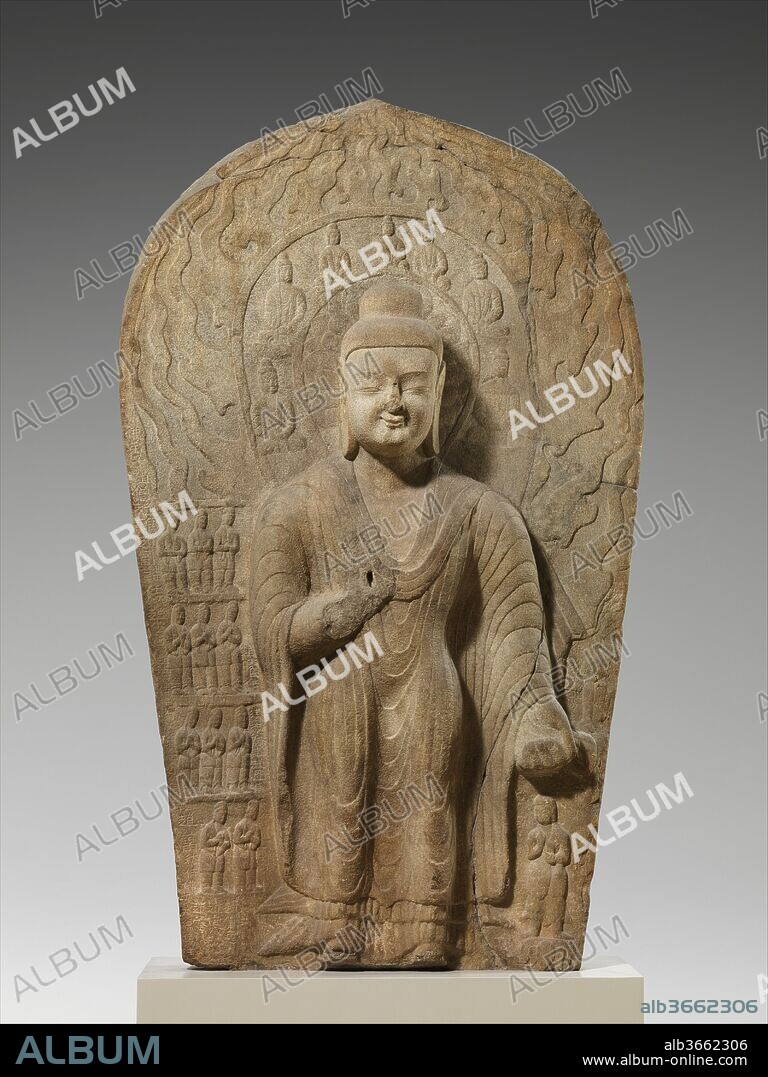alb3662306
Buddha Dipankara (Diguang)

|
Ajouter à une autre Lightbox |
|
Ajouter à une autre Lightbox |



Avez-vous déjà un compte? S'identifier
Vous n'avez pas de compte ? S'inscrire
Acheter cette image.
Sélectionnez l'usage:

Titre:
Buddha Dipankara (Diguang)
Légende:
Voir la traduction automatique
Buddha Dipankara (Diguang). Culture: China. Dimensions: H. 127 in. (322.6 cm); W. 75 in. (190.5 cm); D. 28 in. (71.1 cm); H. with base: 137 in. (348 cm). Date: dated 489-95.
The inscription on the back of this stele identifies the Buddha depicted on the front as Dipankara, who was thought to have lived before the historical Buddha Shakyamuni. He is shown here attended by a group of small figures wearing the clothing of the Xianbei, the non-Han Chinese peoples who ruled the Northern Wei dynasty. The smaller standing figure to the Buddha's right may represent a youth named Sumedha, who was destined to become the historical Buddha in another lifetime. The imagery of this large sculpture is therefore intended to illustrate the promise or possibility of enlightenment in a future life. In Buddhism, the achievement of this advanced spiritual state is the goal of all practitioners.
The bodhisattva with crossed ankles on the back of the stele recalls similar figures in the collection from the Yungang cave temple complex.
Technique/matériel:
Sandstone with traces of pigment
Période:
Northern Wei dynasty (386-534)
Musée:
Metropolitan Museum of Art, New York, USA
Crédit:
Album / Metropolitan Museum of Art, NY
Autorisations:
Taille de l'image:
3203 x 4268 px | 39.1 MB
Taille d'impression:
27.1 x 36.1 cm | 10.7 x 14.2 in (300 dpi)
Mots clés:
 Pinterest
Pinterest Twitter
Twitter Facebook
Facebook Copier le lien
Copier le lien Email
Email
